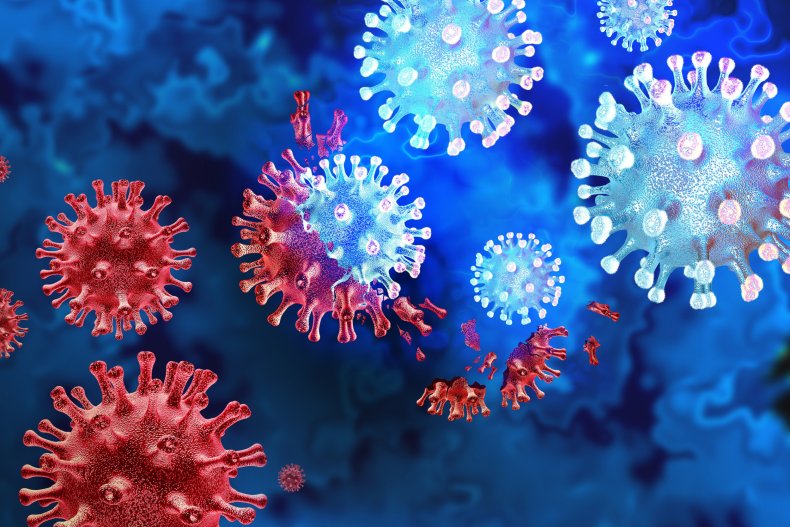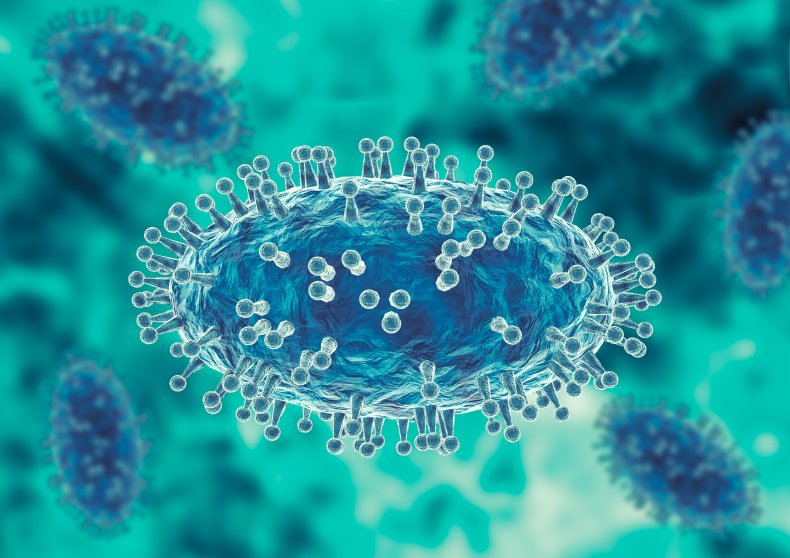ARISTOS GEORGIOU
More than 1,000 cases of monkeypox have been confirmed around the world in several countries where the disease is not usually found—including the United States—raising questions about how the virus is spreading.
But can monkeypox, a rare disease that is usually restricted to parts of Central and West Africa, spread via airborne transmission like the SARS-CoV-2 virus responsible for the COVID-19 pandemic?
Some infectious diseases can spread through airborne transmission via tiny respiratory droplets known as aerosols that can become suspended in the air. These droplets are produced when an individual exhales, sneezes, coughs, talks, or sings, for example. These droplets can contain live viruses or other pathogens that can potentially infect healthy people if they land in the eyes, nose or mouth.
Airborne transmission does not require face-to-face contact, and, in fact, an infected person does not even have to be in the same room as another individual to infect them because the droplets can linger in the air for some time.
 SARS-CoV-2 is known to spread via airborne transmission, but with monkeypox, the picture is much less clear. The above stock image shows the SARS-CoV-2 virus.ISTOCK
SARS-CoV-2 is known to spread via airborne transmission, but with monkeypox, the picture is much less clear. The above stock image shows the SARS-CoV-2 virus.ISTOCKSeveral diseases spread through airborne transmission, including measles and chickenpox. Others, meanwhile, can spread via larger respiratory droplets that do not float in the air as easily and fall to the ground faster.
SARS-CoV-2 spreads through exposure to respiratory fluids containing the infectious virus, and, while it was not clear in the early stages of the COVID-19 pandemic, we now know that this can include aerosols.
According to the Centers for Disease Control and Prevention (CDC), SARS-CoV-2 can spread in three main ways: through; larger respiratory droplets landing on exposed mucous membranes like the mouth, nose or eyes; the inhalation of contaminated aerosols; and touching mucous membranes with hands that have been contaminated with live virus.
While large respiratory droplets can fall to the ground within seconds to minutes, the smallest ones can remain suspended in the air for minutes to hours. The risk of transmission is greater the closer you are to an infected person. The concentration of aerosols is highest within around three to six feet of the person, although these tiny droplets can travel even further.
With monkeypox, however, not much is known about whether or not the disease can spread via airborne aerosols, although this does not seem to be the primary route of transmission.
Unlike SARS-CoV-2, the monkeypox virus, which can enter the body through the respiratory tract, mucous membranes and broken skin, does not tend to spread easily between people, and usually requires close or direct physical contact with an infected person.
 Little is known about whether or not monkeypox can spread via airborne aerosols. Above, an artists's 3D rendering of the monkeypox virus.ISTOCK
Little is known about whether or not monkeypox can spread via airborne aerosols. Above, an artists's 3D rendering of the monkeypox virus.ISTOCKHuman-to-human transmission can occur via larger respiratory droplets. These cannot travel very far, which is why prolonged periods of close contact are usually required for the virus to spread this way.
The virus can also spread via direct physical contact with areas of skin or mucous membranes that contain monkeypox lesions, in addition to indirect contact, like through the sharing of bedding, clothing or other items that have been contaminated by an infected person's bodily fluids or lesions.
"Monkeypox probably does transmit via large respiratory droplets though it is likely that direct close contact (with a patient or their shed skin, or bedding, etcetera) is a more important driver of transmission," Dr. Hugh Adler, an honorary research fellow at the Liverpool School of Tropical Medicine in the United Kingdom, told Newsweek.
"Large droplets travel about 1 meter [3.2 feet] in the air before falling to the ground," he added.
While there is a lack of evidence for airborne transmission with monkeypox, some scientists are concerned that the virus can spread this way. In an update on the recent outbreak affecting non-endemic countries, the World Health Organization suggested that aerosol transmission may be possible over short distances.
Monkeypox belongs to the same family as the smallpox virus (which has been eradicated) and is thought to behave in a similar way to its relative. There is some evidence from past outbreaks of smallpox that it spread via airborne transmission, indicating that the same may be true for monkeypox.
No comments:
Post a Comment